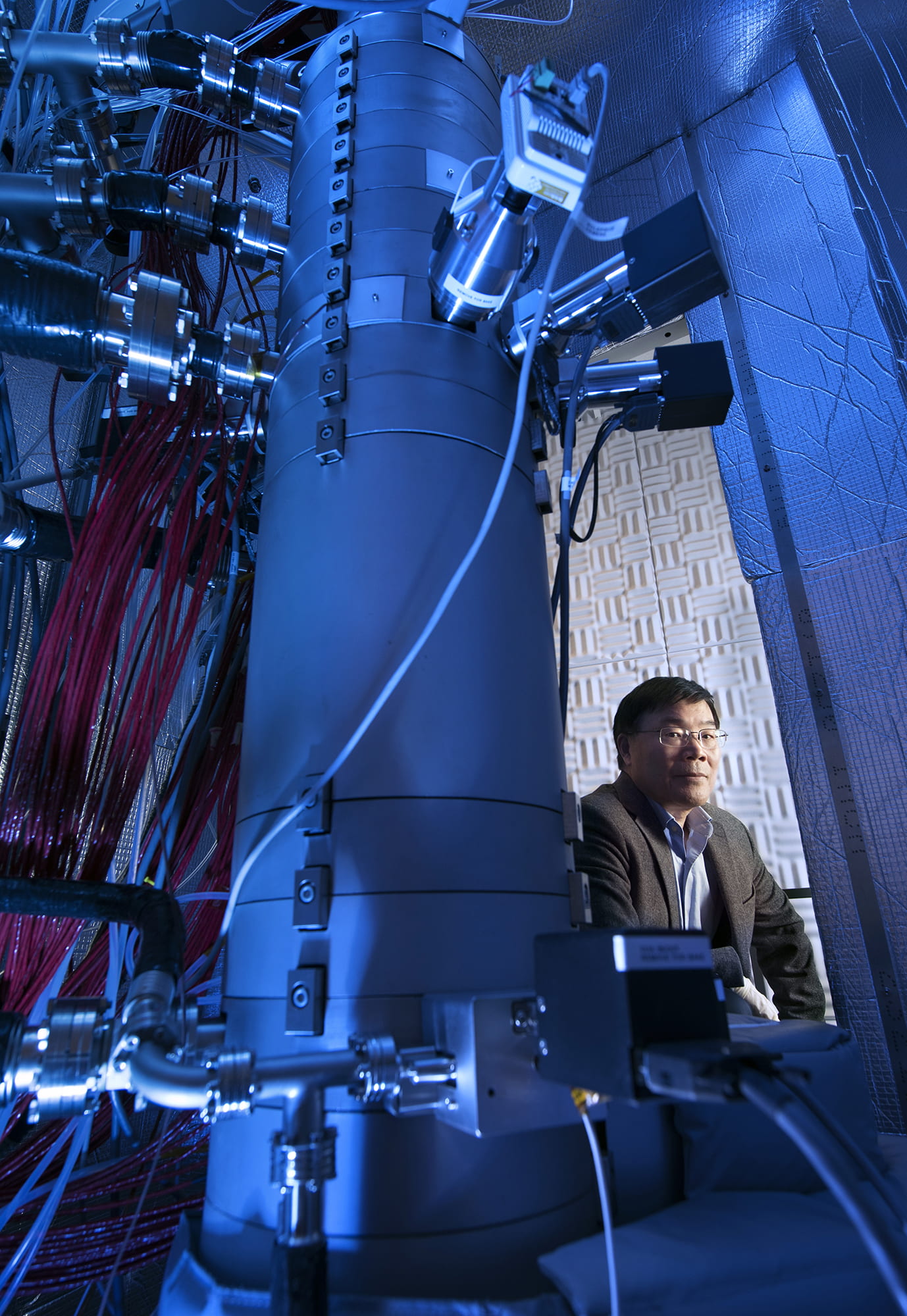A materials world
Director of new UCI research institute discusses its origins, assets and purpose

UCI leaders commemorated the official opening of the campus’s Irvine Materials Research Institute with a ribbon-cutting ceremony earlier this month. The event marked a milestone for the university: the transition from more than 15 years of planning, recruiting, space allocation and equipment acquisition to a state of active, interdisciplinary scientific exploration.
Xiaoqing Pan, Henry Samueli Endowed Chair in Engineering and professor of chemical engineering & materials science, is the inaugural director of the institute. Here, he shares his thoughts on its goals and history and why the world needs cutting-edge materials science research.
Q: What purpose does the new institute serve?
A: For the first time in its history, UCI has an organization solely devoted to the characterization of materials, biological samples and devices from sub-angstrom to macroscopic scales. IMRI’s state-of-the-art facilities are available to any groups on campus who require them, and they may also be hired by academic, industry and nonprofit researchers from around the world.
Q: What instruments does the institute offer?
A: At the heart of IMRI is a host of sophisticated machines for imaging, microscopy and catalyzation. We have one of the most powerful transmission electron microscopes in the world, which allows us to see atoms, molecules and chemical bonds. You can use the instrument to see the structure and dynamic evolution of materials when you apply force in different environments. My group conducted research with this apparatus recently; we induced the formation of new shell layers on an existing platinum particle and viewed the entire process in atomic resolution. This sort of thing was not possible even five years ago.
We also have one of the best commercial surface catalyzation instruments currently available. It can be used for X-ray photoemission and electron microscopy, which is highly beneficial to a number of different research groups here at UCI. We offer an X-ray diffraction facility, a scanning electron microscope, and a focused ion beam system that can be used for surface morphology composition analysis and for cutting materials to make small devices or samples for TEM study. This equipment is housed in Engineering Hall and the California Institute for Telecommunications & Information Technology on campus.
Q: How did the institute come to be?
A: In 2004, I was a faculty member in the Department of Materials Science & Engineering at the University of Michigan when UCI began trying to get me to come out here. They wanted me to help establish a small center for the atomic-scale catalyzation of materials. I said no at the time for both personal and professional reasons. Nine years after that, UCI chemistry professors Reg Penner [then chair of the department] and John Hemminger [then vice chancellor for research] approached me and said they had secured funding for a materials catalyzation facility with state-of-the-art TEM capabilities and asked again if I was interested. I declined again but later agreed to come out for a visit.
By this time, I was an endowed chair/professor and the director of a center at Michigan, so I was fairly well entrenched there. Then Reg suggested that we work together to start a materials research institute using the existing Laboratory for Electron & X-ray Instrumentation as a basis. I would be brought on to establish the institute and drive the broad direction of materials research at UCI. I said, “Yes, that sounds very interesting,” and decided soon after to make the move here around the beginning of 2015.
Q: Why is it important to research materials?
A: We have come to realize more and more in recent years the necessity of having a fundamental understanding of materials in many fields of science and engineering. The key areas of research now are in the life sciences, energy and advanced electronics applications. I am personally interested in investigating how to create more resilient precious-metal catalysts and how ferroelectric, ferromagnetic and multiferroic materials work in quantum systems that can be used for memory and supercomputing devices. There are many chemists and physicists here at UCI who are working on developing better photovoltaics, catalysts, fuel cells and batteries. These are all materials-dependent areas that are very important to society.
Q: What are the wider benefits of the new institute?
A: Around the time I was in serious discussions with Reg Penner about establishing a new materials research institute at UCI, I also met with Howard Gillman, who was then the provost. He asked me what I wanted to do. I said that at my age, at that stage of my career, I wanted to explore something new – not just doing research for my own interests, but also building an institute and an infrastructure that could benefit many other people. He liked my idea, and from that point forward, I have received incredible support from him and countless others, including Provost Enrique Lavernia; Vice Chancellor Pramod Khargonekar; and the engineering, physical sciences and biological sciences deans. IMRI gives a wide array of researchers from many disciplines a place for focused study of the materials that are going to help them make breakthrough discoveries in the coming months and years.